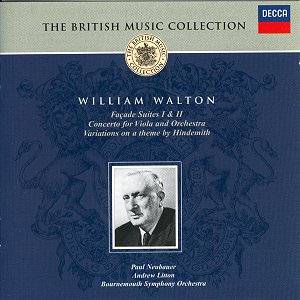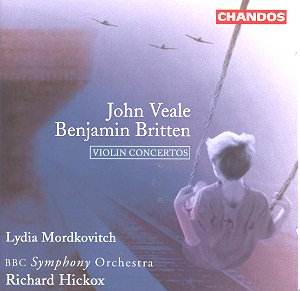 Composer: William Walton
Composer: William Walton
Works: Façade Suites 1 and 2, Viola Concerto, Variations on a Theme of Hindemith
Performers: Paul Neubauer, viola; Bournemouth Symphony Orchestra; Andrew Litton, conductor
Recording: The Guildhall, Southampton, March 1996
Label: DECCA
William Walton occupies a vital place in the canon of British music, revered for his ability to merge lyrical beauty with a vibrant orchestral palette. The present disc from Decca, part of their British Music Collection, showcases some of his most compelling works: the Façade Suites, the Viola Concerto, and the Variations on a Theme of Hindemith. These performances, though recorded in 1996, reveal a timeless quality that speaks to Walton’s enduring relevance and the interpretive strengths of the Bournemouth Symphony Orchestra under Andrew Litton’s direction.
The disc opens with the Façade Suites, which are brimming with the vivid colors and rhythmic flair characteristic of Walton’s early style. Litton’s conducting is particularly effective in evoking the “rude vigour” of the brass in the Scotch Rhapsody, while he deftly balances the swirling textures of the strings in the Valse. The Tango-Pasodoble is executed with a delightful precision, showcasing the ensemble’s deftness, and Litton’s restraint in the Polka prevents it from becoming overly bombastic. While the atmospheric depth of these works may not match the legendary recordings made in Kingsway Hall, the performances here still resonate with a sense of vitality and joy, capturing the spirit of Walton’s unique sound world.
Paul Neubauer’s interpretation of the Viola Concerto is noteworthy for its lyrical introspection and architectural clarity. The opening movement unfolds with an engaging sense of momentum; Neubauer’s lean, flexible tone allows the work’s intricate lines to emerge with clarity. This interpretive choice serves to elevate the work’s profile, emphasizing its emotional depth without succumbing to excessive sentimentality. The second movement showcases Neubauer’s fleet technique amidst the orchestral tapestry, with Litton’s orchestral colorization enhancing the contrasting textures. Their collaboration is marked by a nuanced understanding of the piece’s emotional landscape, particularly during the viola’s yearning introspection that emerges around 9’21, where Neubauer’s rich expressiveness finds a perfect counterbalance in the orchestral fabric.
The Hindemith Variations, while sometimes overshadowed by Walton’s more popular works, are presented here with commendable vigor. Litton’s approach is both forward-looking and meticulous, with a keen attention to the thematic integration throughout the variations. The opening variation features the strings soaring with precision, highlighting the ensemble’s commitment to clarity of attack and articulation. Particularly striking is the ominous tread in the fifth variation, where lower strings delineate an underlying tension that culminates in a beautifully resolved struggle. This sense of struggle and resolution is a recurring theme in the performance, culminating in a serene conclusion that encapsulates the work’s profound emotional journey.
The sound engineering of this recording merits attention as well. The clarity achieved in the orchestral textures allows each instrumental voice to be heard distinctly, enhancing the listener’s appreciation of Walton’s complex orchestration. The balance between soloist and orchestra is expertly managed, ensuring that Neubauer’s viola does not get lost amid the orchestral richness, a common pitfall in recordings of this repertoire.
This release stands as a significant addition to the Walton discography, particularly for its compelling interpretations and high-quality engineering. The performances resonate with a palpable energy and intellectual rigor, making a strong case for Walton’s continued relevance in the concert repertoire. Each work is infused with a sense of purpose and clarity, making this compilation not only a worthwhile listen for Walton aficionados but also an insightful entry point for those new to his music. The collaboration between Neubauer and Litton, alongside the skillful playing of the Bournemouth Symphony Orchestra, results in a testament to Walton’s artistry that is both engaging and thought-provoking.



